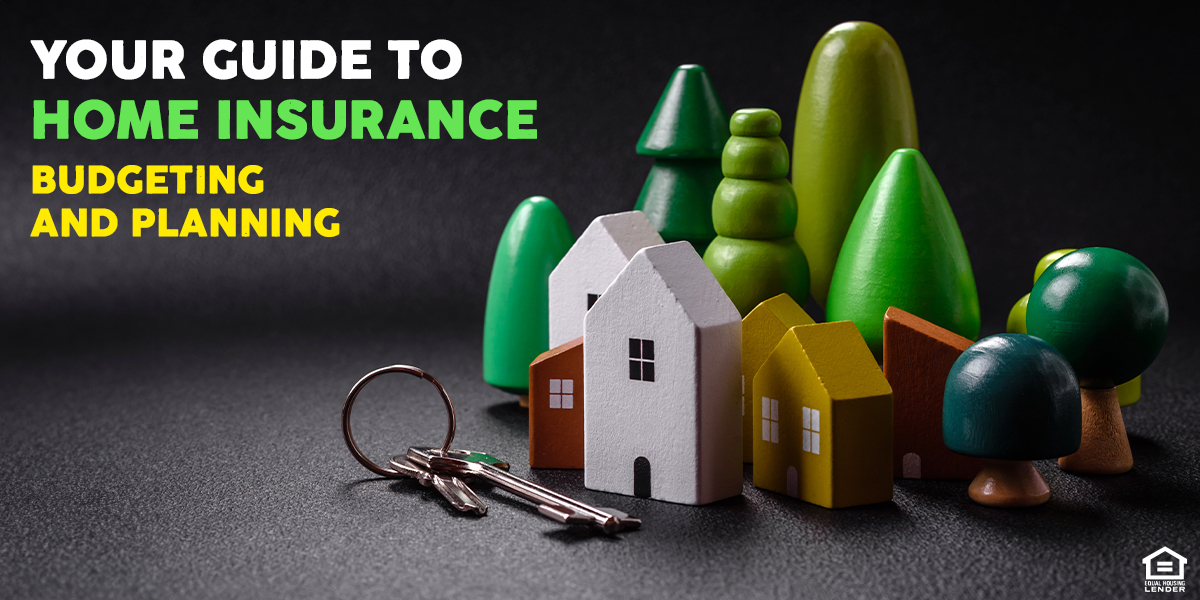
Your Guide to Home Insurance: Strategies for Budgeting and Coverage Planning

The average annual cost of U.S. homeowners insurance is $2,511, or over $200 per month, according to Quadrant Information Services.
By understanding the types of insurance associated with homeownership and how they affect your budget, you can make informed decisions about your monthly payments while ensuring that you and your home remain protected.
Understanding Home Insurance Costs
Home insurance rates are determined by a mix of personal and property-specific factors. While some elements are unique to you as a homeowner, others depend on your home's structure and location.
Home insurance is a risk assessment tool: if your insurer views you as more likely to file a claim or experience a loss, your premiums will generally be higher.
Key Cost Factors
Personal Risk Profile: Your claim history, credit score, and even your age can affect your premium.
Home Characteristics: The age, condition, and construction materials of your home play a significant role in your premium. For instance, older homes might cost more to insure due to outdated wiring or plumbing.
Location: Homes in areas prone to natural disasters may have higher premiums. Your geographic location affects the likelihood of certain risks, such as floods or earthquakes.
Coverage Details: The extent of coverage you choose, such as liability protection, personal property coverage, and the deductible amount, can also influence your premium.
Do You Need Flood Insurance?
FEMA officials testified to Congress that more than 40 percent of National Flood Insurance Program (NFIP) insurance claims came from properties outside of flood hazard zones.
Standard home insurance policies do not include coverage for flood damage. Flood insurance is a separate policy that you might need to consider, especially if your home is in a designated flood zone.
Flood zone information is usually disclosed when you buy a house, but you can also search by your address through online FEMA flood maps.
It’s important to note that if you have a federally-backed mortgage, such as an FHA loan, and your home is in a high-risk flood zone, you are required to have flood insurance.
Flood Insurance Coverage Options
Dwelling Coverage: This coverage protects the structure of your home, including built-in appliances and attached structures. The NFIP provides up to $250,000 in dwelling coverage, which might not be sufficient for higher-value properties.
Contents Coverage: Optional but recommended, this coverage protects your personal belongings like clothing, furniture, and home decor. NFIP policies cap contents coverage at $100,000, but private insurers might offer higher limits and additional options.
Flood Insurance Exclusions
Damage from Moisture, Mildew, or Mold: If these issues could have been prevented, they won't be covered.
Earth Movement: Landslides or similar damage aren’t covered under flood insurance.
Outdoor Structures: Decks, patios, pools, and landscaping typically aren’t included.
Additional Living Expenses: If your home is uninhabitable due to flood damage, additional living expenses are usually not covered.
Closing Thoughts
When budgeting for homeownership, don’t overlook the cost of insurance premiums, as they can vary greatly based on your home’s location and value. Investing time in comparing different insurance policies and their coverage limits ensures that you find the right protection for your needs.